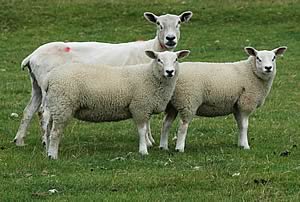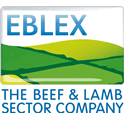 |
|||||||||
|
|||||||||||||||||||||||||||||||||||||
|
|
Litter Size EBVs Boost English Flock Performance Using rams with high Estimated Breeding Values (EBVs) for litter
size in replacement breeding can make a valuable contribution
to improving the performance of English lowland flocks, according
to figures produced by MLC’s Signet Breeding Services on
behalf of the English Beef and Lamb Executive (EBLEX).
Detailed 2005 crop records gathered from a lowland flock show
the daughters of the five rams with the highest litter size EBVs
producing 13 more lambs per 100 ewes than those of the five rams
with the lowest EBVs for the trait.
Assuming an 80% lamb survival rate to sale, this could easily add an extra £5/ewe/year to flock output; worth more than £800 per ram over the productive lifetime of his female offspring retained in the flock. Where producers have a breeding objective to increase lambing %, using high litter size EBV rams will be invaluable. However, EBLEX advises producers to focus their attention on a number of other critical aspects of flock management in parallel to maximise the extent to which the improvement in lambs born is translated into increased lamb output at sale. These include:
Further practical guidance on managing ewes and lambs to minimise lamb losses is available free to levy payers through the Lamb Action for Profit resource at www.eblex.org.uk.
|
||||||||||||||||||||||||||||||||||||

|
|
||||||||||||||||||||||||||||||||||||
| home | agri-services | pedigree
pen | news | dairy | beef | machinery quota | property | organisations | site map |
|||||||||||||||||||||||||||||||||||||

